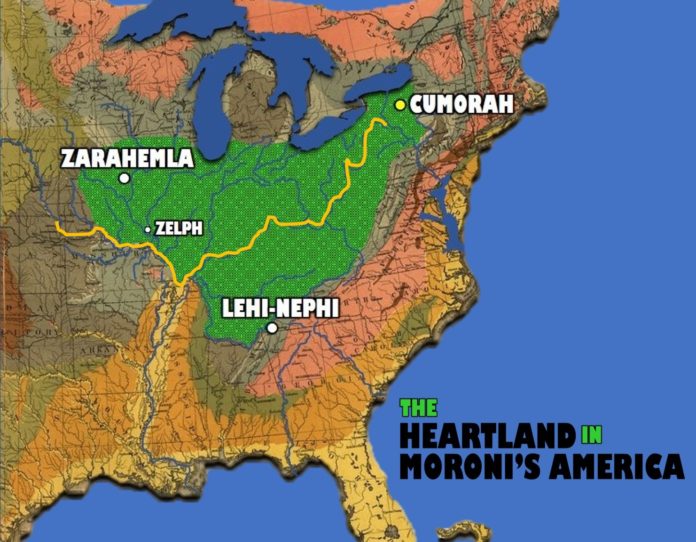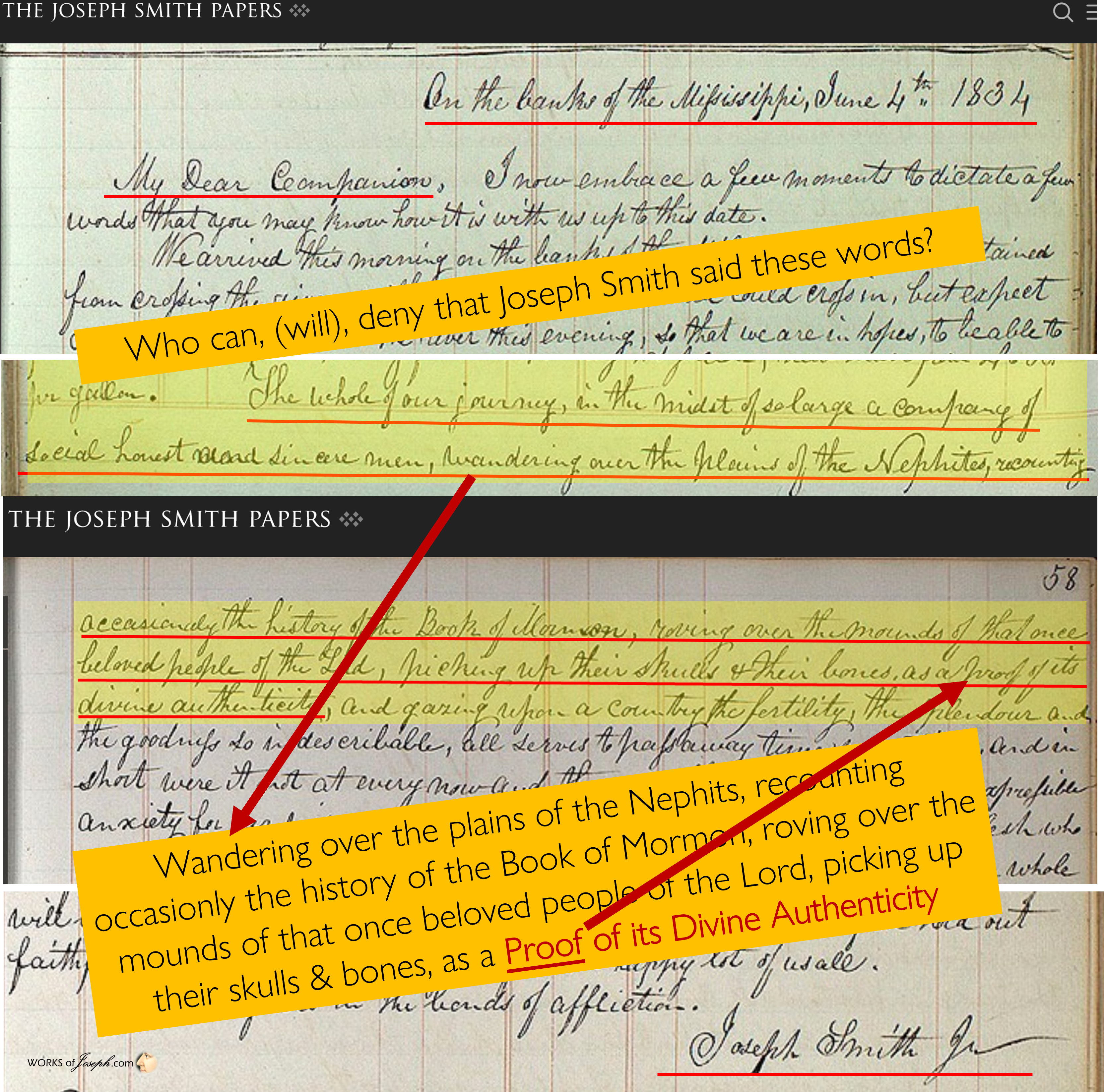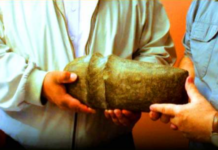By Jonathan Neville
“Although he engraved only 9.8% of the Book of Mormon,[i] Moroni’s contributions were exceptional in several ways.

1. He finished the record by writing things that his father, Mormon, commanded him to write. (Mormon 8:1)
2. He had two unique qualifications. First, he knew the history his father had written. Second, he saw our day. “Behold, I speak unto you as if ye were present, and yet ye are not. But behold, Jesus Christ hath shown you unto me, and I know your doing.” (Mormon 8:35)
3. Hundreds of years after Christ’s ministry, Moroni personally met the disciples of Jesus who had been promised to tarry (Mormon 8:10-11).
4. He knew more than he could write. He explained that “were it possible, I would make all things known unto you.” (Mormon 8:12) Because that wasn’t possible, he selected choice teachings and knowledge specifically for our benefit.
5. He abridged the record of the Jaredites and provided important warnings about secret combinations in our day.
6. He wrote, “And then shall ye know that I have seen Jesus, and that he hath talked with me face to face, and that he told me in plain humility, even as a man telleth another in mine own language, concerning these things.”
7. He gave instructions on Church operations and Priesthood ordinances, spiritual gifts, and sanctification.
8. He explained the manner by which anyone who reads the Book of Mormon can find out, directly from God, whether it is true.

Another reason for the title is that Moroni lived in what is now western New York. It was in America—Moroni’s America—where he saw his father die, where he observed the destruction of his people, where he finished the record, where he buried the plates, where he died, and where he, as a resurrected being, returned to give the plates to Joseph Smith.
By his own words, he was in the area where the Jaredites and Nephites were destroyed—which was the same place where he buried the plates. He called it “this north country” (Ether 1:1).
Oliver Cowdery explained that the plates were written and deposited in New York.
He [Moroni] then proceeded and gave a general account of the promises made to the fathers, and also gave a history of the aborigines of this country, and said they were literal descendants of Abraham. He represented them as once being an enlightened and intelligent people, possessing a correct knowledge of the gospel, and the plan of restoration and redemption. He said this history was written and deposited not far from that place [i.e., Joseph’s home].[ii]
Moroni referred to the Hill Cumorah, where the plates were written and deposited. It is “not far from” Joseph’s home—about two miles south.
Although their message is universally applicable to every child of God on Earth, Moroni and his father (as well as Nephi, Jacob, and the other contributors) were writing in America, about America, to Americans.
The Book of Mormon took place in Moroni’s America.
There is another Moroni who deserves mention here. When he raised the title of liberty, Captain Moroni prayed mightily unto his God for the blessings of liberty to rest upon his brethren, so long as there should a band of Christians remain to possess the land—
And it came to pass that when he had poured out his soul to God, he named all the land which was south of the land Desolation, yea, and in fine, all the land, both on the north and on the south—A chosen land, and the land of liberty.
And he said: Surely God shall not suffer that we, who are despised because we take upon us the name of Christ, shall be trodden down and destroyed, until we bring it upon us by our own transgressions. (Alma 46:13, 17, 18).
This relevance of this message is apparent to those who live in Moroni’s America today.
I titled this book Moroni’s America, but maybe I should have titled it Lehi’s America. For Lehi, the place where he landed was a promised land, a land of inheritance for his descendants.
Where are those descendants today?
Soon after the Book of Mormon was published in 1830, the Lord called Oliver Cowdery, Parley P. Pratt, Ziba Peterson, and Peter Whitmer, Jr., to go on a mission to the Lamanites—the living descendants of Lehi. (See D&C 28:8-10; 30:5-6; and 32:1-3). Where were they sent?
To New York, Ohio, and Missouri.
Sometimes we forget who originally possessed the land now called the United States of America. Before the Europeans arrived, millions of Indians inhabited North America. By the year 1900, their numbers had declined to 237,000.[iii] Even where the former inhabitants have been killed or removed from their land, their presence endures through Indian place names. More than half of the States, as well as dozens of counties, cities, towns, villages, rivers, and landmarks throughout the country, are known by Indian names. All of the states in the Heartland of America have Indian names—except for Indiana, which is a Latin-derived name that means “Land of the Indians.”
American States with Indian names
Alabama – Thicket Clearers (Choctaw)
Alaska – Great Land/Peninsula (Aleut)
Arizona – Silver Slabs/Small Springs (O’odham)
Arkansas – Downstream People (Kansa)
Connecticut – Upon the Long River (Algonquian)
Dakota (North/South) – Related People/Allies (Sioux) (Dakota tribe)
Illinois – Men/Great Men or Speaks Normally (Algonquian)
Indiana – Land of the Indians
Iowa – Drowsy People (Dakota) (Iowa tribe)
Kansas – People of the South Wind (Kansa) (Kaw tribe)
Kentucky – Hunting Ground, the Meadow (Iroquoian)
Massachusetts – Great Hill (Algonquian)
Michigan – Great Water (Ojibwe)
Minnesota – Sky Tinted Water (Dakota)
Mississippi – Father of Water, Great River (Ojibwe) [Sidon?]
Missouri – Long Canoe People (Illinois) (Missouri tribe)
Nebraska – Flat Water (Chiwere)
Ohio – Good River (Seneca/Iroquoian) (for both Ohio and Allegheny)
Oklahoma – Land of the Red People (Choctaw)
Oregon – Beautiful Water (unknown Native American)
Tennessee – Winding River, meeting place, river of the great bend
Texas – Tejas or Allies (Caddo)
Utah – Those Who Dwell High Up (Apache)
Wisconsin – It Lies Red (Miami) or Red Stone Place (Ojibwe)
Wyoming – Big River Flat (Munsee Delaware)
Canadian Provinces
Manitoba – Strait of the Spirit (Cree or Ojibwa)
Ontario – Beautiful Lake (Wyandot)
Quebec – Strait, Narrows (Mikmaq)
Saskatchewan – Swift Flowing River (Cree)
Another important reason for the title Moroni’s America is that Moroni specifically addressed the future inhabitants of his homeland. One of the purposes of the Book of Mormon, the thread that runs throughout from Nephi through Moroni, is connecting the past (Jaredites), present (Nephites), and future (Americans).

When he abridged the writings of Ether, the Jaredite prophet, Moroni included his own editorial comments about the land of promise that had been occupied by the Jaredite nation and the Nephite nation, and would in the future be occupied by another nation.
[i] Wayne A. Larsen and Alvin C. Rencher, “Who Wrote the Book of Mormon? An Analysis of Wordprints,” in Book of Mormon Authorship: New Light on Ancient Origins, ed. Noel B. Reynolds (Provo, UT: Religious Studies Center, Brigham Young University, Provo, Utah, 1982), pp. 157-88, Appendix A
[ii] Oliver Cowdery, Letter IV. Oliver wrote a series of letters to W.W. Phelps, describing events in early Church history. They were published in the Messenger and Advocate, the Times and Seasons, and the Gospel Reflector. Joseph Smith had them copied into his personal journal (History, 1834-1836, p. 69), online here: http://bit.ly/Moroni6. The letters are discussed in my book, Letter VII: Oliver Cowdery’s Message to the World about the Hill Cumorah.

[iii] Estimates of pre-Columbian population numbers vary widely. See Guenter Lewy, “Were American Indians the Victims of Genocide,” History News Network, online at http://bit.ly/Moroni136 and Charles C. Mann, 1491 (Knopf 2005), pp. 97-101.”
Notes
[12] Wayne A. Larsen and Alvin C. Rencher, “Who Wrote the Book of Mormon? An Analysis of Wordprints,” in Book of Mormon Authorship: New Light on Ancient Origins, ed. Noel B. Reynolds (Provo, UT: Religious Studies Center, Brigham Young University, Provo, Utah, 1982), pp. 157-88, Appendix A
[13] Oliver Cowdery, Letter IV. Oliver wrote a series of letters to W.W. Phelps, describing events in early Church history. They were published in the Messenger and Advocate, the Times and Seasons, and the Gospel Reflector. Joseph Smith had them copied into his personal journal (History, 1834-1836, p. 69), online here: http://bit.ly/Moroni6. The letters are discussed in my book, Letter VII: Oliver Cowdery’s Message to the World about the Hill Cumorah.
[14] Estimates of pre-Columbian population numbers vary widely. See Guenter Lewy, “Were American Indians the Victims of Genocide,” History News Network, online at http://bit.ly/Moroni136 and Charles C. Mann, 1491 (Knopf 2005), pp. 97-101.”
Moroni’s America by Jonathan Neville page 4-7






